Many of us are making critical mistakes when moisturizing our skin, potentially undermining its health and appearance. According to research published in the National Center for Biotechnology Information (NCBI), proper moisturizing is crucial for maintaining skin barrier function and preventing various dermatological issues.
Our skin's outermost layer, the stratum corneum, is key to keeping our skin hydrated. It's structured like a brick wall, with skin cells as “bricks” held together by lipids as “mortar”. When this structure is healthy, it effectively locks in moisture. Moisturizers help maintain this structure, but using them incorrectly can do more harm than good. Let’s identify and correct these common moisturizing mistakes.
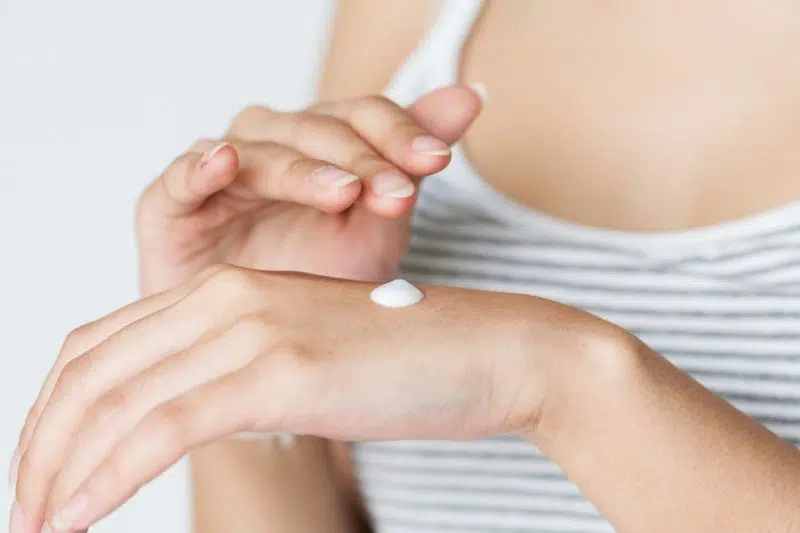
8 Most Common Moisturizing Mistakes — And What to Do Instead?
We've compiled a list of common moisturizing mistakes based on scientific evidence. By understanding and avoiding these errors, you can significantly improve your skin's health and appearance. Let's explore the top 8 moisturizing mistakes and learn how to moisturize correctly.
Build Your Perfect Skin Care Regimen
Take Quiz1. Ignoring Your Environment
Climate plays a crucial role in skin condition. Cold, dry air strips moisture from your skin, while indoor heating further reduces air humidity. This combination can leave your skin parched and irritated.
Low humidity, both outdoors and indoors, is a major factor in skin dryness. It pulls moisture from your skin, leading to a decrease in skin barrier function. Dr. Elizabeth Kiracofe, a board-certified dermatologist, advises, “When it's cold, switch to heavier creams. Cut back on products with alpha or beta hydroxy acids. These can irritate winter skin, even with moisturizers.”
It's not just cold weather that affects skin. Hot, humid climates can also impact your skin's moisture balance. In these conditions, lighter, non-comedogenic moisturizers may be more appropriate to prevent clogged pores while still providing hydration.
Pollutants and outdoor elements also can affect the skin barrier and accelerate aging. Using moisturizers with antioxidants can help protect from environmental stressors, while those containing SPF can be beneficial for those who love the outdoors.
To adapt your skincare routine to your environment:
- Use a humidifier to add moisture to dry indoor air.
- Apply moisturizer immediately after bathing to lock in moisture.
- Choose moisturizers appropriate for your climate and season.
- Don't wait for visible damage; adjust your routine proactively.
2. Incorrect Application Techniques
Applying moisturizer correctly is just as important as choosing the right product. Many people make mistakes in how much they use and where they apply it. Using too much can lead to shiny, oily skin or even breakouts if your product clogs your pores, while using too little may leave your skin feeling tight and inadequately hydrated.
Dr. Madeleine Gantz, MD, FAAD, a certified dermatologist at Westlake Dermatology, advises, “Generally, less is more when it comes to your skincare routine. Oversaturating doesn't increase efficacy and can potentially lead to irritation.”
Here are general guidelines to help you gauge the ideal amount moisturizer for your skin:
- For your face: Start with a dime-sized amount or slightly more to ensure adequate coverage for your entire face. Use gentle, upward strokes
- For your neck: A pea-sized amount is usually enough. Apply in upward motions to fight gravity
- A bit more to extend the application to your chest area.
Your face moisturizer can work well for your neck and chest. There's no need for separate products unless you prefer them.
Listen to your skin. If it feels thirsty, add a little more. But don't go overboard – using half a jar in one go won't give you better results. A little goes a long way in skincare.
Don't rush the process. Many people rub their moisturizer vigorously, especially when in a hurry. This can be counterproductive, wasting product and potentially damaging your skin. Vigorous rubbing creates friction that may lead to premature aging and can irritate sensitive facial skin.
Instead, adopt a gentler approach. Start by dotting the product on the main areas of your face – forehead, cheeks, nose, and chin. Then, use your ring and pinky fingers to apply in light, circular motions. These fingers naturally exert less pressure, reducing the risk of skin damage. Alternatively, you can gently pat the product into your skin.
Take your time to massage the product into your skin gently. This not only ensures even coverage but can also promote a healthy glow.
3. Neglecting to Moisturize at Night
A common moisturizing mistake stems from the myth that skin needs to “breathe” at night. This myth often results in two problematic behaviors:
- Not moisturizing twice daily: Many people only moisturize in the morning, thinking nighttime application will block their pores.
- Inconsistent application: Some apply moisturizer at night sporadically, believing occasional “breathing” is necessary.
The truth is, skin doesn't perform respiration. As skin experts explain, when people talk about skin “breathing,” they're often referring to whether the skin is occluded.
Sebum, the skin's natural moisturizer, fluctuates in 8-hour cycles. It peaks in the early afternoon and reaches its lowest point at night. With less sebum, the rate of transepidermal water loss increases. Low oil levels can disrupt the skin's moisture barrier. Skin repair mechanisms are at their height in the evening. By skipping your evening moisturizer, you're missing an opportunity to support your skin's natural balance and provide hydration when your skin may need it most.
Moreover, skin permeability peaks at night, allowing for deeper product penetration. Skipping or inconsistently applying moisturizer misses this opportunity for enhanced hydration and repair.
To avoid this mistake:
- Moisturize twice daily, especially at night.
- Choose a lightweight, non-comedogenic moisturizer if you're concerned about pore blockage.
- Use products with active ingredients at night (like retinol or peptides) to support skin repair.
- Maintain a consistent routine for optimal skin health.
4. Skipping Moisturizer for Oily or Acne-Prone Skin
Many people believe that adding moisture to already oily skin will worsen their condition. However, this misconception can lead to more skin problems.
Dr. Melanie Palm, a board-certified dermatologist in San Diego, explains, “Acne-prone skin is often dehydrated. The lack of water causes oil glands to overcompensate by producing excess oil and sebum, which can clog pores and lead to breakouts.” This highlights the crucial difference between oil and hydration in skin health.
Skipping moisturizer can trigger a vicious cycle:
- Dehydrated skin overproduces oil to compensate.
- Excess oil clogs pores, leading to more breakouts.
- Harsh cleansing routines may further dry out the skin, potentially exacerbating the issue.
Moisturizers can help balance natural oils, provide hydration without adding excessive oil, and create a protective barrier against environmental stressors. By maintaining proper hydration, moisturizers help prevent the skin from overcompensating with excess oil production, ultimately reducing the risk of clogged pores and breakouts.
To avoid this mistake:
- Choose lightweight, oil-free, non-comedogenic moisturizers.
- Look for ingredients like hyaluronic acid for hydration without oiliness.
- Consider moisturizers with ingredients like salicylic acid or niacinamide that support clear-looking skin.
- Don't forget sunscreen – use a non-greasy, broad-spectrum SPF 30 or higher.
Using both sunscreen and moisturizer is essential for maintaining a healthy and radiant complexion, especially for those with oily skin.
5. Applying Moisturizer with Dirty Hands
Many people diligently cleanse their skin before applying moisturizer, but overlook a crucial step: washing their hands. This oversight can significantly impact the effectiveness of your skincare routine and potentially harm your skin.
Dr. Lily Talakoub, a Virginia-based dermatologist, explains the prevalence of bacteria on our hands: “Bacteria is all over our hands. From our doorknobs to desks, keyboards, shopping carts—it's everywhere. Your face is a warm home for bacteria, so wash your hands before washing your face to prevent any transfer of bacteria, which can cause acne and skin infections.”
Common mistakes include:
- Applying skincare products with unwashed hands
- Using a cellphone while applying moisturizer
- Touching other surfaces during the skincare routine
To avoid this mistake:
- Wash your hands thoroughly before starting your skincare routine
- Avoid touching your phone or other surfaces while applying moisturizer
- Consider using clean applicators or tools to minimize hand contact with your face
6. Incorrect Order of Skincare Application
Many people unknowingly compromise their skincare routine by applying products in the wrong order, particularly when it comes to moisturizer. This common mistake can significantly impact the effectiveness of your skincare products and overall skin health.
Dr. Craig Kraffert, a board-certified dermatologist, emphasizes the importance of proper application order: “The order you place your skincare products matters. In general, you want to apply products thinnest to thickest. This ensures that all the product is getting time in direct contact with your skin, and that no potent ingredients are wasted.”
Common reasons for this mistake include:
- Lack of knowledge about the correct order of application
- Misconceptions about the importance of product layering
- Misleading marketing information
- Time constraints leading to rushed skincare routines
Only so much product can penetrate your skin, and applying skincare in the incorrect order makes your skin absorb even less active ingredients. Likewise, using thicker products (like moisturizers) before thinner products (like serums) prevents the absorption of active ingredients.
To correct this mistake:
- Follow the “thinnest to thickest” rule: Apply lighter products first, followed by heavier ones.
- Understand product functions: Cleansers come first, followed by treatments (like serums), then moisturizers, and finally sunscreen.
- Consider pH levels: Some products require specific pH ranges to function optimally.
- Allow time between applications: Give each product time to absorb before applying the next.
7. Never Changing Your Moisturizer
Many people fall into the trap of using the same moisturizer for years, often out of habit or a misplaced sense of loyalty because the believe “If it works for you then there is no need to change.” However, this mindset overlooks the dynamic nature of our skin and its changing needs.
Our skin undergoes constant changes due to various factors. As we age, our skin's ability to retain moisture decreases, and its needs evolve. Hormonal fluctuations during pregnancy or menopause can dramatically alter skin characteristics. Even external factors like moving to a different climate or changing seasons can impact our skin's moisture requirements.
Continuing to use the same moisturizer despite these changes can lead to suboptimal skin health. A product that worked perfectly in your 20s may not provide sufficient hydration in your 30s or 40s as skin naturally loses plumpness. Similarly, a moisturizer suited for dry winter months might be too heavy for humid summers, potentially leading to clogged pores and breakouts.
The solution lies in being attentive to your skin's changing needs. Sieanna Pardi, Dermal Clinician at Northern Sydney Dermatology and Founder of Raw Skin Insider, explains, “You should only be switching up your routine when upgrading skincare to include more powerful or active ingredients, as advised. It is fine to update your routine when your skin concerns change, when you're no longer seeing results, or are feeling that your skin isn't getting the nourishment it needs.”
- As a general rule, reassess your moisturizer every 6 months to a year to ensure it is still working optimally for your skin's condition.
- Pay attention to how your skin reacts over time. If it becomes too dry, dull, or flaky, consider a richer cream. If it's too oily or your pores are clogged, try a lighter product.
- Give new products time to work. Pardi advises, “You need to give your skin at least three months before noticing healthy change.”
- Consider rotating through different moisturizers suited to your skin type and the season.
8. Choosing the Wrong Moisturizer for Your Skin
Many people unknowingly make the mistake of using the wrong moisturizer for their skin type, a common error that can lead to significant skin issues. This mistake often stems from a lack of awareness about one's specific skin type and needs, coupled with the tendency to follow generic skincare trends or recommendations from friends and influencers.
Dr. Charles Puza, a board-certified dermatologist, underscores the gravity of this error: “Moisturizing the wrong way could lead to a ton of other issues, including dryness, itchiness, and breakouts. It's crucial to choose a moisturizer that matches your skin type and needs.”
The impact of using an inappropriate moisturizer can be substantial. For those with dry skin, using a lightweight formula meant for oily skin can exacerbate dryness, leading to flakiness, and premature aging. Conversely, individuals with oily skin using heavy creams may experience clogged pores, increased oiliness, and acne breakouts. Sensitive skin types might react negatively to chemical fragrances or active ingredients in products not designed for their needs, resulting in redness and inflammation.
To choose the right moisturizer, consider your skin type:
- Dry Skin: Opt for nourishing creams or oils rich in emollients. Coconut oil, grapeseed or avocado oil can be beneficial, but avoid products with alcohol which can be overly drying. Look for ingredients that support the skin's moisture barrier.
- Oily Skin: Choose lightweight, fast-absorbing formulas. Ingredients like white willow bark and neem can help balance natural oils. Light herbal oils are often suitable.
- Sensitive Skin: Avoid fragranced products, including those with essential oils. Opt for gentle, fragrance-free moisturizers with soothing ingredients like herbal facial oil for sensitive skin.
- Mature Skin: Look for anti-aging products with antioxidants and ingredients like jojoba oil. Consider using a retinol-alternative serum in conjunction with your moisturizer to address fine lines and wrinkles without harsh side effects.
- Combination Skin: Use different products for different areas of your face. Apply lighter formulas on oily areas (like the T-zone) and richer products on drier areas.
Expert Advice for Effective Moisturizing
Moisturizing techniques vary widely —from age-old remedies to cutting-edge innovations, from social media trends to grandmothers' secret recipes. Knowing what not to do is only half the battle. To provide clarity, we've consulted board-certified dermatologists and skincare experts. Their evidence-based insights offer reliable guidance for your skincare routine. Here's what these professionals recommend for effective moisturizing:
- Choose the Right Ingredients and Use Them Wisely: Dr. Jenny Liu, board-certified dermatologist and Assistant Professor at the University of Minnesota Medical School, recommends using moisturizers with ceramides. “Ceramides play a crucial role in maintaining a healthy skin barrier,” she explains. Other beneficial ingredients include hyaluronic acid, glycerin, and niacinamide.
However, skin expert Melanie Marshall warns against overusing active ingredients: “It's about finding a balance between actives, antioxidants, and protectors. You can use all the hydration in the world, but if you are overusing ingredients like alpha-hydroxy acids, you'll always find yourself suffering the effects of dehydration.”
- Match Your Moisturizer to Your Skin Type: Dr. Daniel Sugai, board-certified dermatologist based in Seattle, advises selecting a moisturizer texture that suits your skin type. “Lotions work well for normal to oily skin, creams for dry skin, and ointments for very dry or chapped skin,” he states.
- Apply to Damp Skin: “Moisturizing after showering? It's all about locking in that moisture,” says Dr. Sugai. Applying moisturizer to slightly damp skin helps seal in hydration more effectively. Dr. Adam Friedman, Professor and Chair of Dermatology at George Washington School of Medicine and Health Sciences, adds, “When your skin is damp, thicker creams and ointments spread more easily, and the moisturizer is more effective because it traps water in the skin and keeps it from evaporating.”
- Be Patient and Persistent: Dr. Sugai emphasizes the importance of giving your skincare routine time to work. “You need to give your products time to work and develop a routine,” he advises. Consistent use over time is key to seeing results and maintaining skin health.
- Don't Forget Your Body: Dr. Adeline Kikam, board-certified dermatologist and founder of Brown Skin Derm, emphasizes the importance of moisturizing your entire body, not just your face. Pay extra attention to areas prone to dryness like hands, feet, and elbows with a nourishing body lotion daily. For those seeking natural options, our radiant skin silk is formulated with organic ingredients to hydrate and rejuvenate skin from head to toe.
- Prepare Your Skin: Dr. Debra Jaliman, board-certified dermatologist in New York City, advises, “It's important to lightly exfoliate your skin, which you can do by using a baby washcloth every time you wash your face or using a cotton pad. This helps to take off the dead skin on the face so that the moisturizer penetrates into your skin.”
- Consider Your Diet: Dr. Ifeoma Ejikeme, Medical Director at Adonia Medical Clinic in London, suggests incorporating omega-3 fatty acids, found in nuts, seeds, and oily fish, into your diet to support skin hydration from within.
As we've explored the nuances of effective moisturizing, it's clear that healthy skin is a delicate balance of science and self-care. The path to radiant skin doesn't end with avoiding common mistakes – it evolves as we learn more about our unique skin needs.
This journey might lead you to explore the world of humectants, those powerful moisture-attracting ingredients, or to consider how natural oils can play a role in your skincare routine. You might find yourself reassessing your current moisturizer, wondering if it truly meets your skin's changing needs.
At Annmarie Skin Care, we believe in nurturing this curiosity. Our range of herb-infused moisturizers is designed to complement your skin's journey.
Remember, great skin isn't a destination – it's an ongoing conversation with yourself. Keep listening to your skin; it's the best guide you have on this ever-evolving journey to skin health.
Have you been making some of these moisturizing mistakes? Please share any tips you have with our readers.
Have you been making some of these moisturizing mistakes? Please share any tips you have with our readers.


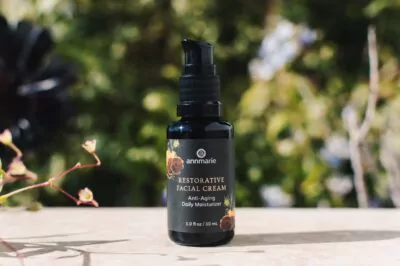
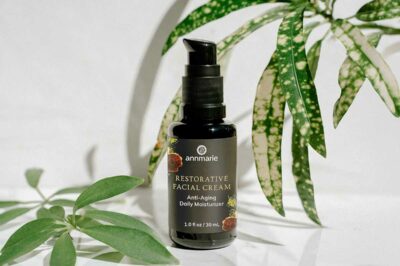
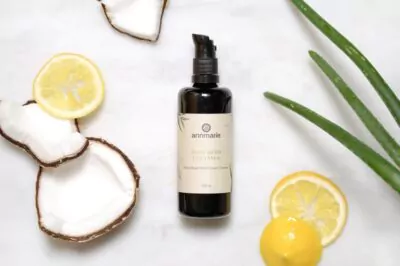
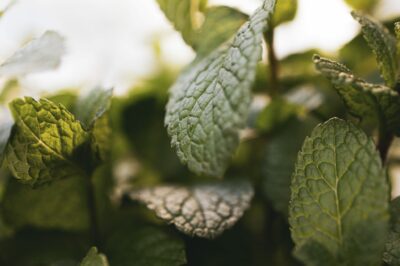


Just ran across your site when I was researching fractionated coconut oil. Thanks BTW. I love your posts. The simple, clear presentation is a welcome change from so many blogs and sites. I will return here whenever I need new facts about items related to skin care made with natural ingredients.
Thanks for this, I think I have been making some of these mistakes, particularly no.1 as I have super dry skin (almost eczema) even though I put coconut oil on every day. I actually stopped exfoliating a year ago because my skin is so sensitive, I thought it was making it worse… Should you exfoliate even with very sensitive skin? (I can’t use honey or yoghurt as I’m vegan.) How often should you exfoliate? Also, what kind of body brush do you recommend (the ones I’ve seen in shops don’t look very soft!)? Thanks so much!
I am ‘guilty’ of ALL the above – oh my! Now at least I know & can change it.
Thank you all & the few months I’ve had your products are showing great differences ( to the good 😉 I now have to get more moisturizer as I really LIKE vanilla smell, is there a specific reason your changing it? i.e. purer ingredients etc.. Just wondering.
People don’t know what their missing so I’ve been ‘sharing’ small amounts for friends to try & they are loving it too. YAY!
Blessings & continued success in helping us keep in line so we can SHINE to our best ability!
Jolene
You are great to give us simple home recipes for skin care. The coconut oil mix works very well. Thank you. Brenda — travel writer
Oh thank you so much! I haven’t seen moisturizing talked about in detail before! I am guilty of some of these which might explain why my skin has been quite inconsistent in texture. Keep up the wonderful posts!
I loooooove your page! Keep up the amazing work! I am so lucky i got to know your products. Love them i honestly think they are some of the best out there and i just discovered your blog has such amazing tips too ???? greetz from germany ????????????????????????
Hi Laura,
Thanks so much!! Glad you found us, too!!